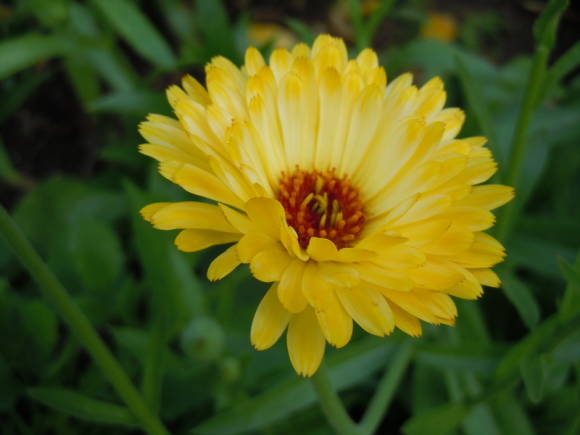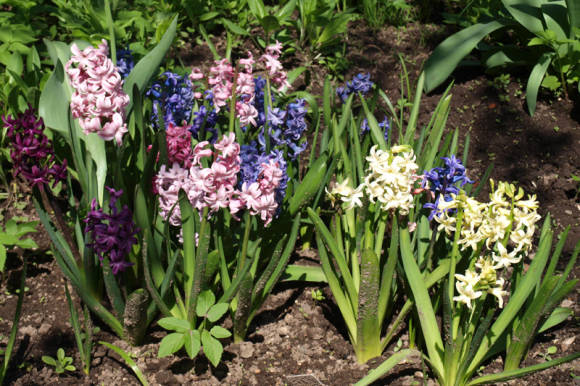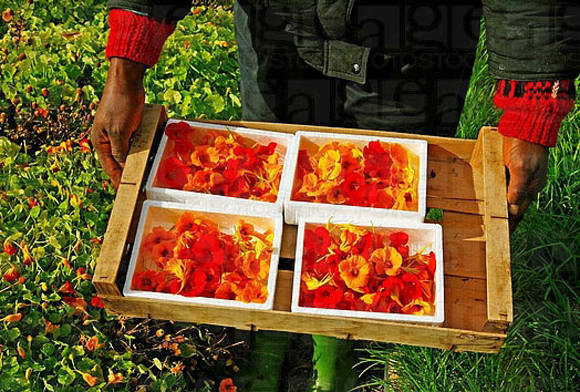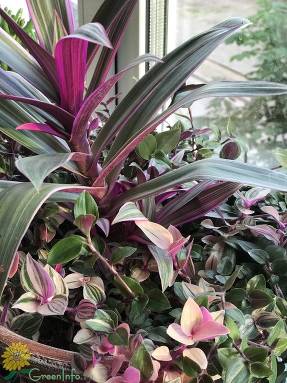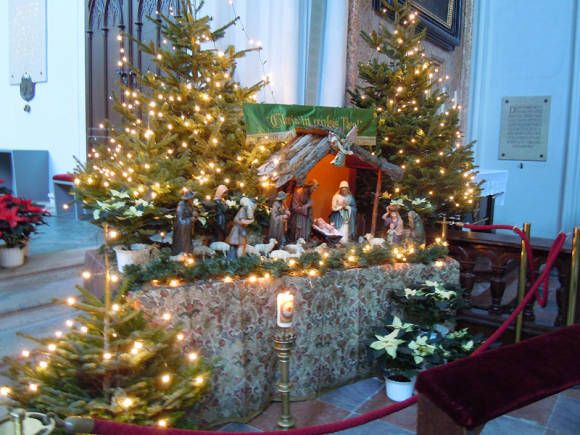The decorative design of your site by the inclusion of an aqueous composition in it is becoming more and more popular. The presence of water helps to relieve the feeling of enclosed space created by walls and hedges. Today, you can create a pond in any size area. The main thing is to choose a certain style for it that matches both your perception of the reservoir and the rest of the garden elements.
There are two main styles of pond design.
 |
Formal pond |
The first option is the so-called formal pond. It has regular, sometimes slightly smoothed geometric outlines (square, oval, etc.), and sometimes even more bizarre shapes - polygonal, round and elliptical. A formal pond is suitable for a small area, as a small open-cut pond in a small area can look like a large puddle. A strict pond also looks good as part of a large garden planned in a formal style - for example, next to a rock garden, with a stone-paved area. A well-defined, geometric pond is usually separated from the rest of the garden. A formal pond can be supplemented with a bathing pool if the size of the site allows. At the same time, the purity of the water will be ensured by the plants that will settle in the so-called regeneration zone. The entry of plants into the pool will be prevented by a separation barrier.
In a formal pond, you can do without coastal plants, and if they are, then in small numbers and quite bright, with the same clearly expressed decorative forms: irises and nymphea are well suited. Such a pond is usually finished with stone or mosaics. A formal decorative pond is a place where you can fantasize: decorate it with fountains, waterfalls, various lights, bridges, and launch elegant exotic fish into it.
 |
Photo of the company "Globus" |
The category of formal reservoirs can also be attributed to raised above the ground reservoirs - containers with a diameter of 0.5-1.2 m, installed on the terrace, in which one or more plants are planted. For a small pond, in this case, a flower box, and a tub, and a cup are suitable - everything into which you can pour water and plant an aquatic plant. You can create a composition of several tubs of different sizes. Sometimes their bottom is simply laid out with multi-colored pebbles. True, a container with water, albeit small in size, sometimes turns out to be overwhelming, and before you set up a reservoir on the terrace, think - will the architectural structure withstand such additional loads? By the way, like ordinary artificial reservoirs, such mini-ponds look great not only on the terrace, but also in small paved gardens surrounded by a high fence. These decorative water surfaces visually enlarge the space by reflecting the sky.
A square or rectangular pond can be built using concrete or a stamped mold. There are ready-made shapes of other outlines - round, oval, ellipsoid, triangular, in the form of the letter L. Flexible insulating material is best used in the construction of a reservoir of simple geometric outlines with slightly rounded corners - a pit with bizarre outlines or sharp corners is difficult to cover with a film.
 |
Free pond |
For the pond free outlines you need space and the appropriate style of garden planning. Such a pond is designed for long-term operation and does not require special care, but it takes up a lot of space. In order for it to turn into a self-regulating ecosystem in two or three years, at least 5-6 square meters are required. m. In addition, the reservoir must be deep enough, at least 50 cm, and care should be taken that the bottom is not visible (for example, make it black). The boundaries of the reservoir can gradually move into a wetland area, and it is necessary to provide enough space for its natural development. This style of pond will satisfy the needs of the plant lover and provide abundant opportunities to create luxurious plantings that are unacceptable in the rest of the garden. Natural pond "to face" will be a stream flowing into it. Moreover, in order to create a stream in the garden, it is not at all necessary to have a plot on a slope or a lot of space - a small height difference between the source of the stream and the shore of the reservoir is enough. The design of the stream source opens up a wide scope of imagination.
When creating a pond, the main thing is the irregular outlines that give it a natural look. In such a pond, there must be coastal plants that hide its boundaries and make the man-made lake indistinguishable from the one located in the nearest forest. "Shores" can be decorated with cattail, volzhanka, ferns, daylilies, irises. The assortment of plants for reservoirs and coastal zones is large, but the compositions must strictly correspond to the style of the reservoir: only a harmonious combination of water surface and plants creates a special effect. In addition, such a water garden will become a refuge for a great number of "children of nature", such as large rainbow dragonflies, beautiful butterflies, water striders, tadpoles, small fish, small mammals that come to the watering hole. All this living splendor will not leave anyone indifferent and will more than justify your efforts spent on creating a pond.
Caring for such a reservoir requires a set of measures to keep the water clean and the plants healthy. Aquatic plants only grow and reproduce in full sun. Ideally, the pond will be exposed to the sun for at least six hours a day, but at noon it should be in the shade so that the water does not overheat.
If it occurs to you to create a reservoir by damming or changing the course of a stream, keep in mind that such design is much more complicated, and at the end of the pre-design survey, it may turn out that their construction is unacceptable or will cause an ecological imbalance on a local scale, for example, waterlogging of the territory, or vice versa. , its draining. Therefore, it is better not to take independent actions, but to resort to the help of a specialist.
In some areas, it is generally not recommended to create reservoirs. In places with swampy soils, the natural pond will quickly become waterlogged, and the soil will deteriorate, losing fertility. And in some southern regions, where there are problems with water, the pond, on the contrary, will require constant "replenishment" of water, which is not always convenient. Try to figure out in advance what kind of soil you will have to deal with and how you can solve the problem of water supply to the pond on hot days.

